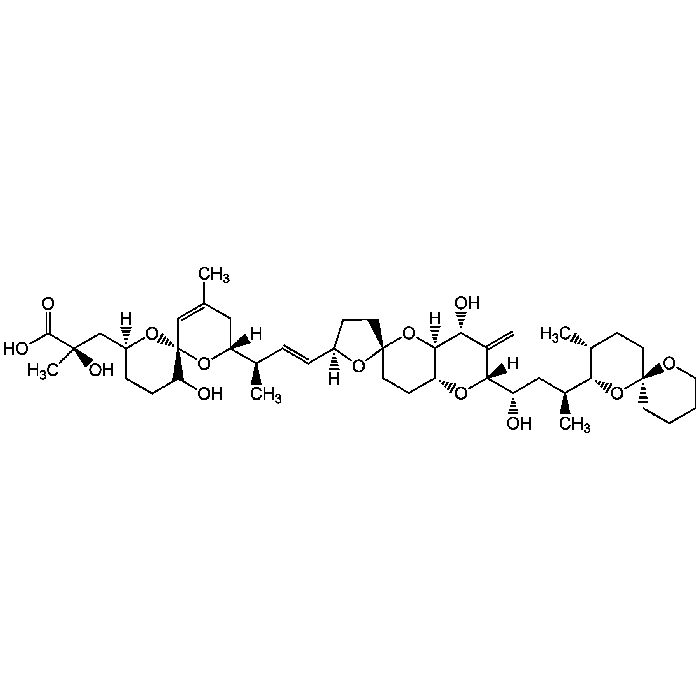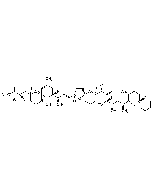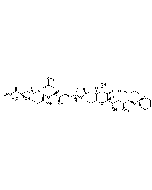Cookie Policy: This site uses cookies to improve your experience. You can find out more about our use of cookies in our Privacy Policy. By continuing to browse this site you agree to our use of cookies.
AdipoGen Life Sciences
Okadaic acid (free acid) (high purity)
As low as
98
CHF
CHF 98.00
In stock
Only %1 left
AG-CN2-0056-C02525 µgCHF 98.00

| Product Details | |
|---|---|
| Synonyms | Halochondrine A; CCRIS 3329; HSDB 7243; 9,10-Deepithio-9,10-didehydroacanthifolicin |
| Product Type | Chemical |
| Properties | |
| Formula | C44H68O13 |
| MW | 805.0 |
| Merck Index | 14: 6819 |
| CAS | 78111-17-8 |
| RTECS | AA8227800 |
| Source/Host Chemicals | Isolated from Prorocentrum concavum. |
| Purity Chemicals | ≥98% (HPLC) |
| Appearance | White crystalline solid. |
| Solubility | Soluble in DMSO, ethanol or methanol. |
| Other Product Data | Use only fresh solutions. |
| InChi Key | QNDVLZJODHBUFM-OQMIOGKESA-N |
| Smiles | [H][C@@]1(CC[C@@]2(CC[C@H]3O[C@@]([H])([C@@H](O)C[C@H](C)[C@H]4O[C@@]5(CCCCO5)CC[C@H]4C)C(=C)[C@@H](O)[C@]3([H])O2)O1)\C=C\[C@@H](C)[C@@]1([H])CC(C)=C[C@@]2(O[C@]([H])(C[C@@](C)(O)C(O)=O)CCC2O)O1 |
| Shipping and Handling | |
| Shipping | AMBIENT |
| Short Term Storage | +4°C |
| Long Term Storage | -20°C |
| Handling Advice | Keep cool and dry. |
| Use/Stability | Stable for at least 2 years after receipt when stored at -20°C. |
| Documents | |
| MSDS |
 Download PDF Download PDF |
| Product Specification Sheet | |
| Datasheet |
 Download PDF Download PDF |
Description
- Non-phorbol type tumor promoter [1].
- Reversible, potent and selective serine threonine protein phosphatase inhibitor. PP2A (IC50=0.2-1nM), PP1 (IC50=3-15nM), PP2B (IC50=>1µM). Does not inhibit PP2C [2, 6, 7, 18].
- Stimulates intracellular protein phosphorylation [3].
- Useful tool for studying cellular processes that are regulated by phosphorylation. Does not affect activity of acid phosphatase, alkaline phosphatase and tyrosine phosphatase [4, 5].
- Mimics the effects of insulin [7]. Activates atypical protein kinase C (ζ/λ) in 3T3/L1 adipocytes [14, 19].
- Enhances transmitter release at neuromuscular junctions [8].
- Apoptosis inhibitor [9, 11, 12].
- Induces apoptosis in human breast carcinoma cells (MB-231 and MCF-7) and in myeloid cells [10].
- Neurotoxic [12, 16].
- Used to study various cellular processes including cell cycle, apoptosis, nitric oxide metabolism and calcium signaling [13, 15, 17, 18].
- Stimulates cell motility, loss of stabilization of focal adhesions and a consequent loss of cytoskeletal organization [20].
Product References
- Okadaic acid: an additional non-phorbol-12-tetradecanoate-13-acetate- type tumor promoter: M. Suganuma, et al.; PNAS 85, 1768 (1988)
- Inhibitory effect of a marine-sponge toxin, okadaic acid, on protein phosphatases. Specificity and kinetics: C. Bialojan & A. Takai; Biochem. J. 256, 283 (1988)
- Effects of the tumour promoter okadaic acid on intracellular protein phosphorylation and metabolism: T.A. Haystead, et al.; Nature 337, 78 (1989)
- An improved procedure for identifying and quantitating protein phosphatases in mammalian tissues: P. Cohen, et al.; FEBS Lett. 250, 596 (1989)
- Okadaic acid: a new probe for the study of cellular regulation: P. Cohen, et al.; TIPS 15, 98 (1990) (Review)
- Use of okadaic acid to inhibit protein phosphatases in intact cells: D.G. Hardie, et al.; Methods Enzymol. 201, 469 (1991)
- Effects of okadaic acid, an inhibitor of protein phosphatases-1 and -2A, on glucose transport and metabolism in skeletal muscle: J.F. Tanti, et al.; J. Biol. Chem. 266, 2099 (1991)
- Protein phosphatase inhibitor okadaic acid enhances transmitter release at neuromuscular junctions: M. Abdul-Ghani, et al.; PNAS 88, 1803 (1991)
- Inhibition of apoptosis in human tumour cells by okadaic acid: Q. Song, et al.; J. Cell Physiol. 153, 550 (1992)
- Differential induction of apoptosis in human breast tumor cells by okadaic acid and related inhibitors of protein phosphatases 1 and 2A: K. Kiguchi, et al.; Cell Growth Differentiation 5, 995 (1994)
- Differential inhibition and posttranslational modification of protein phosphatase 1 and 2A in MCF7 cells treated with calyculin-A, okadaic acid, and tautomycin: B. Favre, et al.; J. Biol. Chem. 272, 13856 (1997)
- Okadaic acid-induced apoptosis in neuronal cells: evidence for an abortive mitotic attempt: R. Nuydens, et al.; J. Neurochem. 70, 1124 (1998)
- Inhibitors of protein phosphatase 1 and 2A differentially regulate the expression of inducible nitric-oxide synthase in rat astrocytes and macrophages: K. Pahan, et al.; J. Biol. Chem. 273, 12219 (1998)
- Okadaic acid activates atypical protein kinase C (zeta/lambda) in rat and 3T3/L1 adipocytes. An apparent requirement for activation of Glut4 translocation and glucose transport: M.L. Standaert, et al.; J. Biol. Chem. 274, 14074 (1999)
- Unique features of the okadaic acid activity class of tumor promoters: H. Fujiki & M. Suganuma; J. Cancer Res. Clin. Oncol. 125, 150 (1999) (Review)
- Neurotoxic and synaptic effects of okadaic acid, an inhibitor of protein phosphatases: R. Tapia, et al.; Neurochem. Res. 24, 1423 (1999) (Review)
- Okadaic acid, useful tool for studying cellular processes: J.J. Fernández, et at.; Curr. Med. Chem. 9, 229 (2002) (Review)
- Okadaic acid: the archetypal serine/threonine protein phosphatase inhibitor: A.B. Dounay & C.J. Forsyth; Curr. Med. Chem. 9, 1939 (2002) (Review)
- Effect of okadaic acid on glucose regulation: M.C. Louzao, et at.; Mini Rev. Med. Chem. 5, 207 (2005) (Review)
- Marine toxins and the cytoskeleton: okadaic acid and dinophysistoxins: C. Vale & L.M. Botana; FEBS J. 275, 6060 (2008) (Review)







